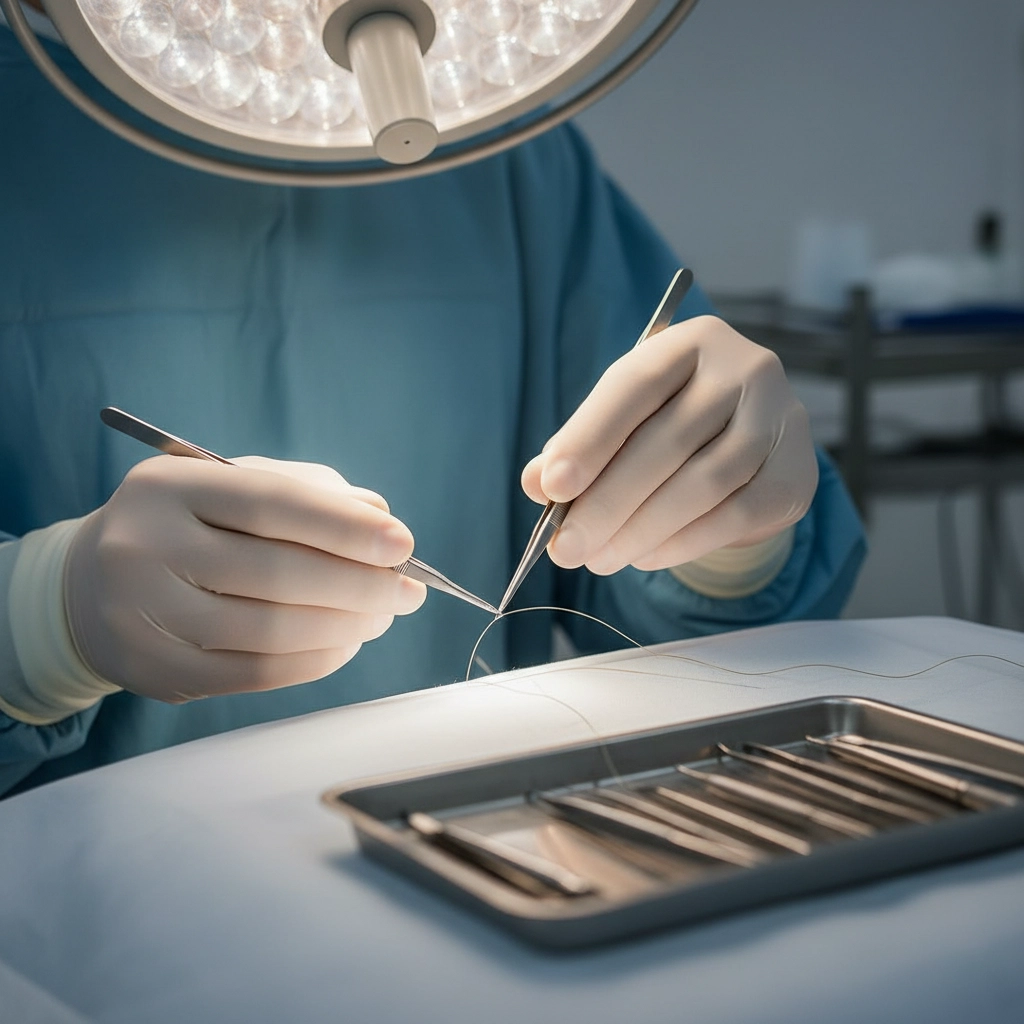Facial Nerve Reanimation Explained in Under 3 Minutes: What Experts Don't Want You to Know
- Gautham Ullas
- 1 day ago
- 5 min read
Have you ever wondered what happens when half of your face suddenly stops working? Or maybe you're dealing with facial paralysis right now and feeling overwhelmed by all the medical jargon doctors throw around. Let's break down facial nerve reanimation in simple terms: because you deserve to understand exactly what this procedure can do for you.
What Is Facial Nerve Reanimation?
Think of your facial nerve as the main electrical wire that powers one side of your face. When this wire gets damaged, everything connected to it stops working properly. You can't smile, close your eye, or even taste food normally. Facial nerve reanimation is basically rewiring your face to get those functions back.
The facial nerve is actually one of your body's largest cranial nerves, and it controls way more than you might think. It's responsible for:
Moving your facial muscles
Producing tears to keep your eyes moist
Helping you taste food
Controlling some of your hearing functions
When this nerve gets damaged, the effects go far beyond just appearance: though that's certainly a major concern for most people.
Why Would You Need This Surgery?
Facial paralysis doesn't just happen randomly. There are several reasons why your facial nerve might stop working properly:
Bell's Palsy is probably the most common cause you've heard of. It's when your facial nerve gets inflamed, usually due to a viral infection. Most people recover from Bell's palsy on their own, but sometimes the damage is permanent.
Acoustic Neuroma sounds scary, but it's actually a non-cancerous tumor that grows on your facial nerve. When surgeons remove the tumor, they sometimes have to damage the nerve to save your life.
Trauma from accidents, especially head injuries, can sever or crush your facial nerve. Car accidents, sports injuries, or even falls can cause this type of damage.
Congenital Conditions mean you were born with facial nerve problems. Some people are born with conditions like Moebius syndrome, where the facial nerves never developed properly.
Other Surgeries sometimes require cutting through facial nerves. If you've had surgery to remove cancerous tumors in your face or skull, nerve damage might be unavoidable.
How Does the Surgery Actually Work?
Here's where things get really interesting. Your surgeon has several tricks up their sleeve, depending on your specific situation.
Nerve Transfers: Borrowing From Yourself
This is probably the coolest technique. Your surgeon takes a healthy nerve from somewhere else in your body and connects it to your damaged facial nerve. It's like creating a detour when the main highway is blocked.
The most common "donor" nerves are:
Masseteric nerve (controls your jaw muscles for chewing)
Hypoglossal nerve (controls your tongue movement)
So after surgery, when you bite down or move your tongue, you'll also smile. It sounds weird, but your brain learns to adapt pretty quickly.

Nerve Grafting: Building a Bridge
Sometimes your surgeon can actually repair the damaged nerve by using a piece of healthy nerve from somewhere else in your body: usually from your leg. They remove the damaged section and replace it with this "bridge" of healthy nerve tissue.
This works best when the damage is in a specific, limited area rather than affecting the entire nerve system.
Muscle Transplants: The Ultimate Makeover
For severe cases, your surgeon might need to bring in reinforcements. They can take a muscle from your inner thigh (called the gracilis muscle) along with its nerve and blood vessels, and transplant it to your face.
This is major surgery, but the results can be incredible. You literally get a new muscle to help you smile again.
Static vs. Dynamic Options
Not every solution involves movement. Sometimes the goal is just to make your face look symmetrical when you're at rest. Static procedures use things like:
Surgical threads or slings to lift the corner of your mouth
Fat grafting to add volume to the paralyzed side
Eyelid weights to help your eye close properly
Dynamic procedures actually restore movement and expression, which is usually what people prefer if they're candidates for it.
What Should You Expect From the Process?
The surgery itself typically takes a few hours, depending on which technique your surgeon uses. Most procedures use minimally invasive approaches, meaning smaller incisions and less obvious scarring.
Before Surgery:
You'll have detailed imaging studies to map out your facial nerve
Your surgeon will test what nerves are still working
You might need to stop certain medications
Expect lots of photos for before-and-after comparisons
During Surgery:
You'll be under general anesthesia
Your surgeon might use special devices to test nerve function during the procedure
The incisions are usually hidden in natural creases or behind your ear
After Surgery:
You'll have some swelling and bruising for about two weeks
Initial results might not show up for several months
Full results can take up to a year as nerves slowly regenerate
The Reality Check: What Can You Actually Expect?
Let's be honest about results. Facial nerve reanimation is amazing, but it's not magic. You probably won't get back 100% of what you lost, but you can expect significant improvements in both function and appearance.
Realistic Outcomes:
Better facial symmetry when smiling
Improved ability to close your eye
Enhanced quality of life and self-confidence
Better protection for your eye
What Might Not Come Back:
Completely natural-looking movement
Perfect symmetry in all expressions
Full restoration of tear production
Spontaneous emotional expressions (you might need to think about smiling)
The success of your surgery depends on several factors:
How long it's been since your nerve was damaged
The cause of the damage
Your age and overall health
Which nerves are available for transfer
Your commitment to post-surgery therapy
When Is the Best Time for Surgery?
Timing matters more than you might think. Some procedures work best within the first 6 months others at about a year after nerve damage, while others can be done years later.
Early Intervention (within 6-18 months) gives you the most options because your facial muscles haven't completely wasted away yet.
Late Intervention (after 2+ years) is still possible, but you might need more complex procedures like muscle transplants since your original facial muscles may no longer be viable.
Don't panic if you're reading this years after your injury. There are still excellent options available, even if the approach needs to be different.
Questions to Ask Your Surgeon
When you meet with a facial plastic surgeon, come prepared with these questions:
Which technique do you recommend for my specific situation?
What's the realistic timeline for seeing results?
What are the potential complications?
Will I need physical therapy afterward?
How much of my facial function can realistically be restored?

Living With Facial Paralysis: You're Not Alone
Dealing with facial paralysis affects way more than just your appearance. It impacts how you eat, speak, express emotions, and interact with others. Many people feel self-conscious or isolated.
The good news? Facial nerve reanimation has helped thousands of people regain not just their smile, but their confidence and quality of life. Modern techniques are more sophisticated than ever, with better results and fewer complications.
Taking the Next Step
If you're considering facial nerve reanimation, the most important thing is finding a surgeon who specializes in this specific type of surgery. Not all facial plastic surgeons have experience with facial nerve procedures, and this expertise makes a huge difference in your results.
Look for a surgeon who:
Specializes specifically in facial plastic surgery
Takes time to explain your options clearly
Makes you feel comfortable asking questions
Remember, this is your face we're talking about. You deserve a surgeon who understands not just the technical aspects of the procedure, but also how important this is for your emotional well-being and quality of life.
Ready to explore your options? The journey back to facial function and confidence starts with a simple consultation.
Comments